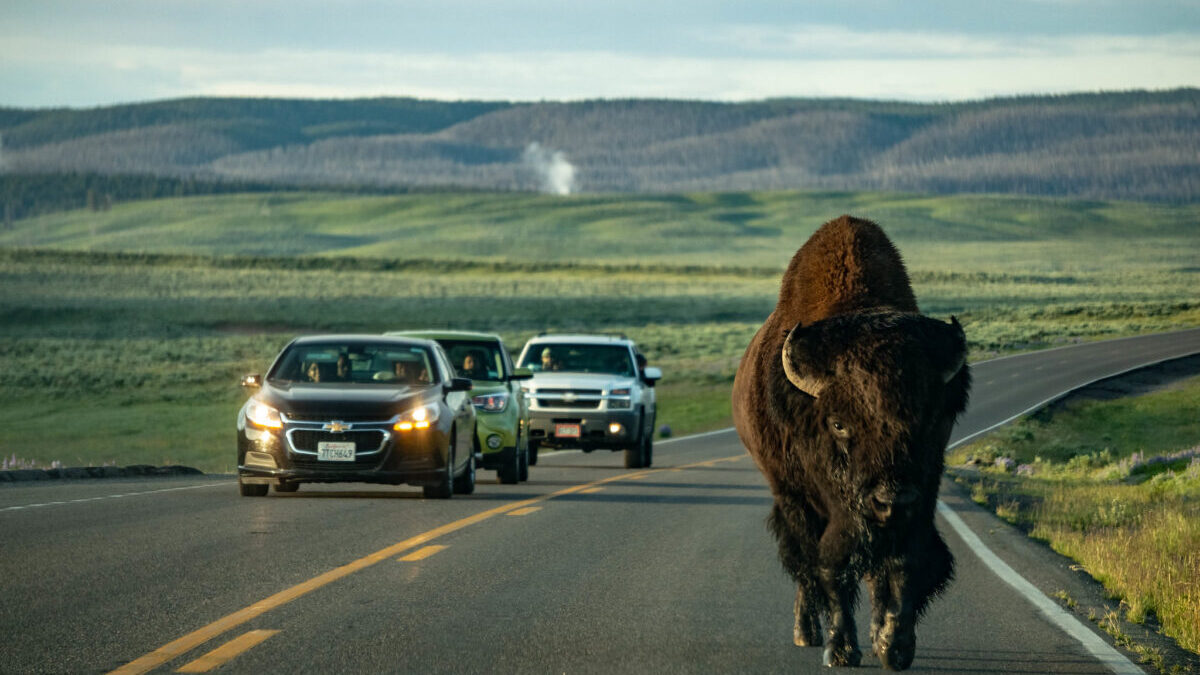
Another tourist went viral this week after a bison in Yellowstone National Park charged the visitor, who had tried to place her hand on the wild animal to take a selfie.
Video footage shows the tourist on a boardwalk reaching her hand in front of the bison’s face before the horned bovine lunged to force the visitor off the path. The creature appeared to catch the edge of the girl’s sweater with its horns before she broke loose and fell onto the grass behind her.
The episode, which occurred over Memorial Day weekend, captured viral attention and headlines from Fox News to Forbes Magazine. The National Park Service warns against getting too close to unpredictable wildlife — at least 25 yards from bison and 100 yards from bears and wolves — for a reason. But the government shouldn’t have to issue juvenile guidelines to adult tourists. Of course, the selfie problem was never an issue in the pre-smartphone era before entitled chasers of Instagram influence obliviously roamed the National Parks.
Bison are the largest land mammals in North America, weighing up to 2,000 pounds with a potential speed of 35 miles an hour. Petting the wild beast that has stood at the center of American and Indian folklore for centuries not only defies common sense but is asking to become a natural experiment in Darwinian selection. Those willing to invade an animal’s space for the sake of a stupid photo to post online almost deserve the foreseeable consequences. The problem got so bad the National Park Service published a guide on social norms surrounding selfies with bison.
Every year there are more horrifying stories detailing how visitors at national parks get attacked by wildlife, as if the creatures suddenly became deranged and hellbent on marking their territory. The reality is that 9 times out of 10, tourists were probably ignoring park safety recommendations by getting too close to animals as if they were in a petting zoo.
Last fall, photographers in Colorado’s Rocky Mountain National Park surrounded a wild elk that was clearly stressed and ultimately charged a man taking pictures. No injuries were reported in the October incident, but that wasn’t the case for visitors in a nearby park four years ago who were well within the 75-foot safety radius outlined by officials. Two people were injured with one hospitalized after an elk charged visitors in Estes Park. One driver had his tire slashed by an elk’s horns after taunting the animal in January, and deservedly so.
Falls remain the most common cause of death for national park visitors, resulting in 245 fatalities from 2010 to 2019. Attacks by wild animals were blamed for six deaths between 2007 and 2013, four from grizzlies, one from a mountain goat, and one by a snake. None of these tragedies were caught on tape, so it’s unclear whether the victims were acting irresponsibly. When it comes to bears and snakes at least, encounters can become far more unpredictable. Their deaths are a reminder, however, that wild animals in national parks are just that: wild. Carry bear spray and keep your distance.









